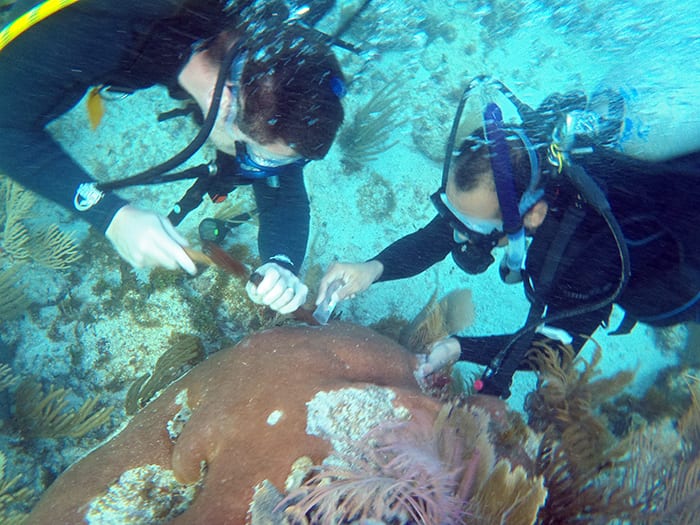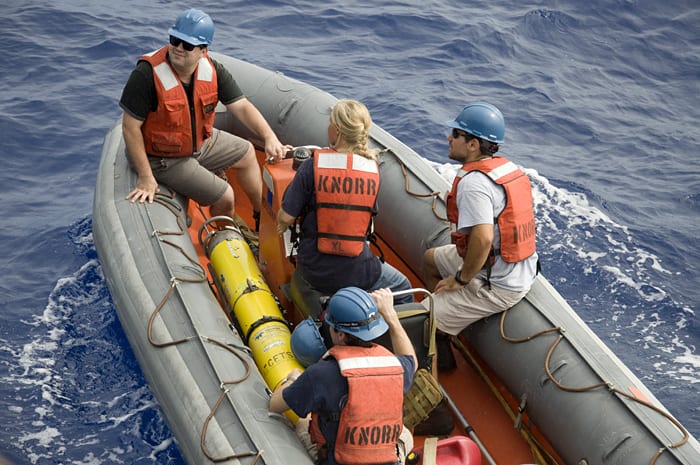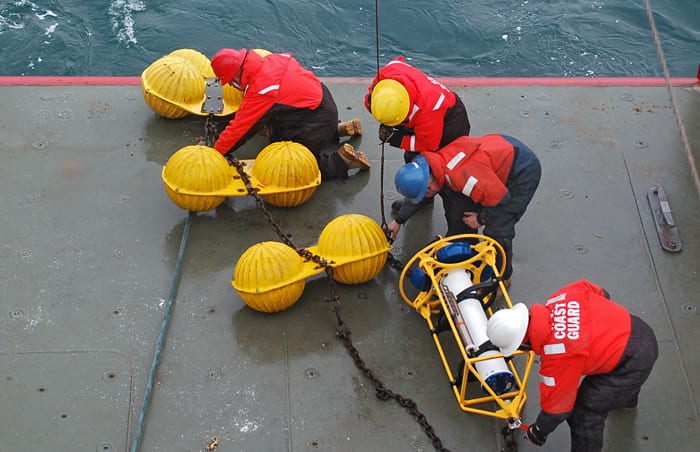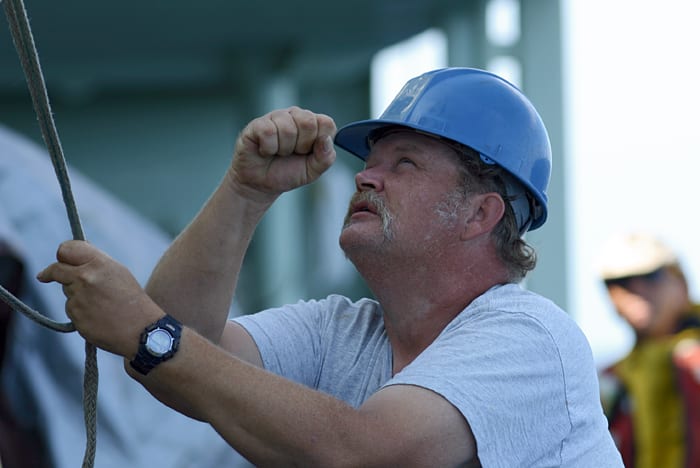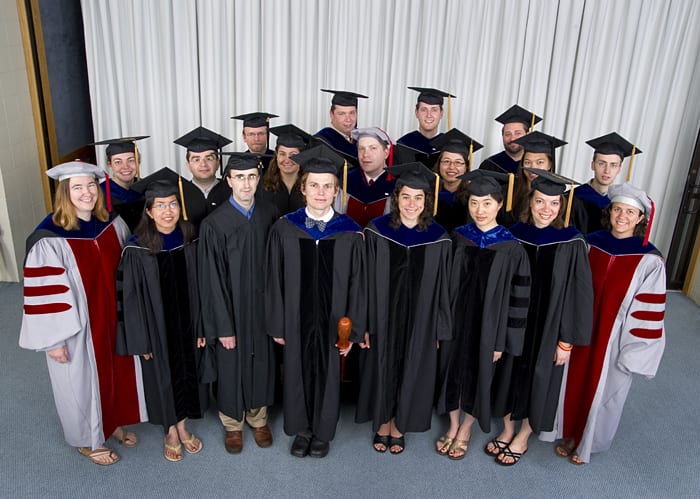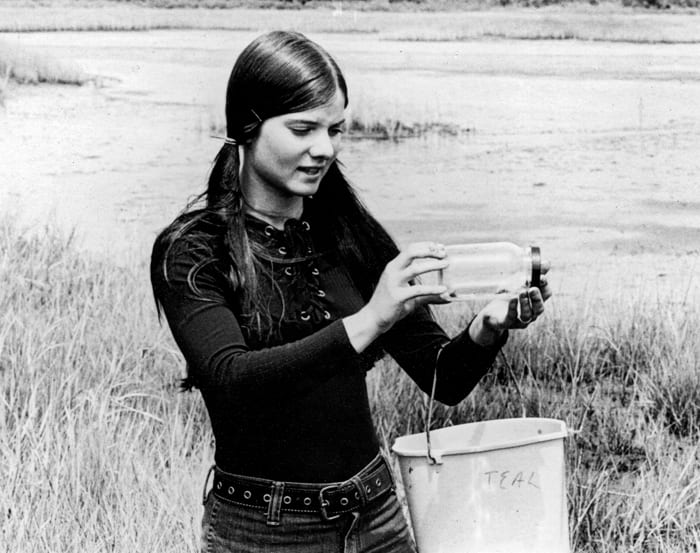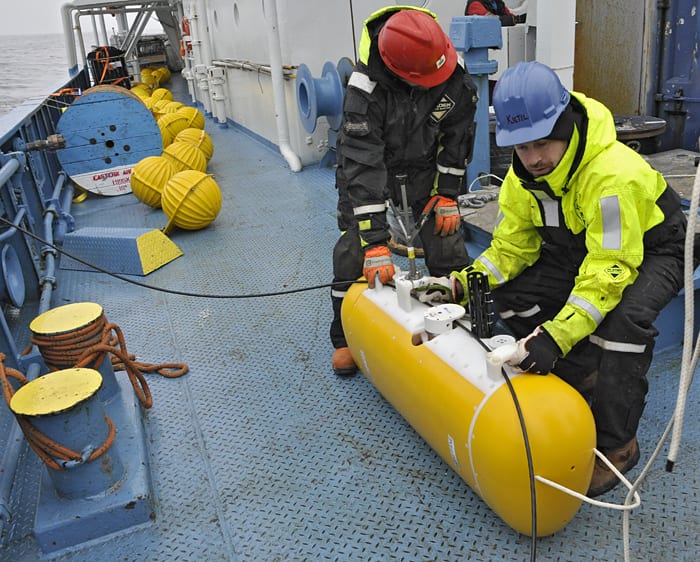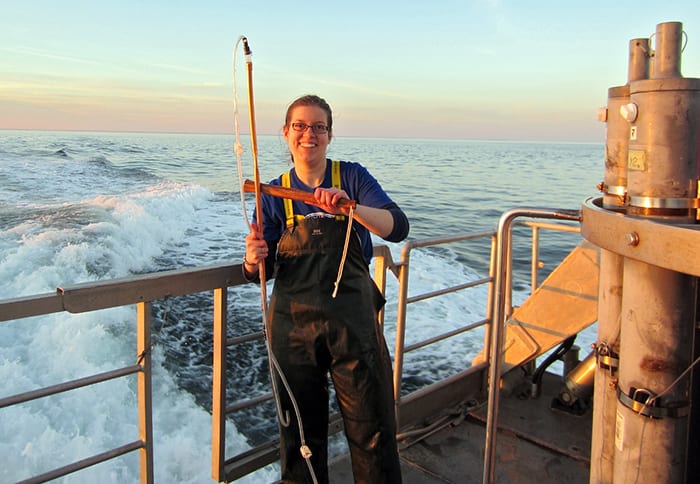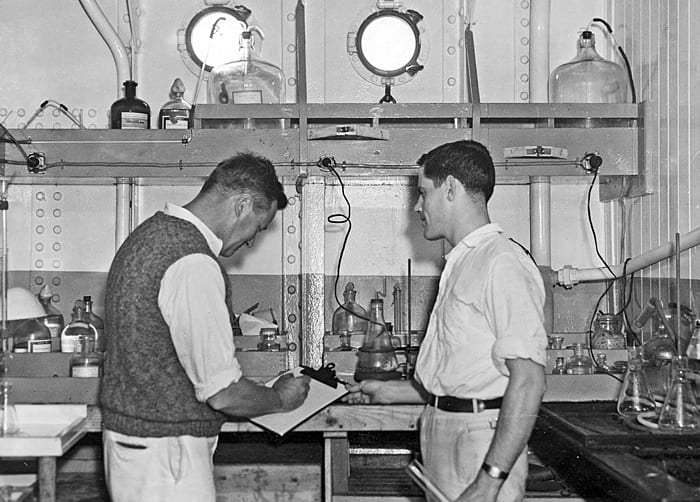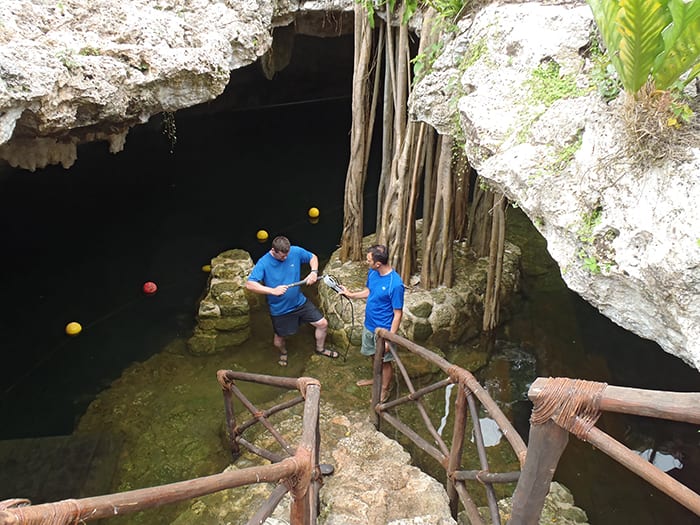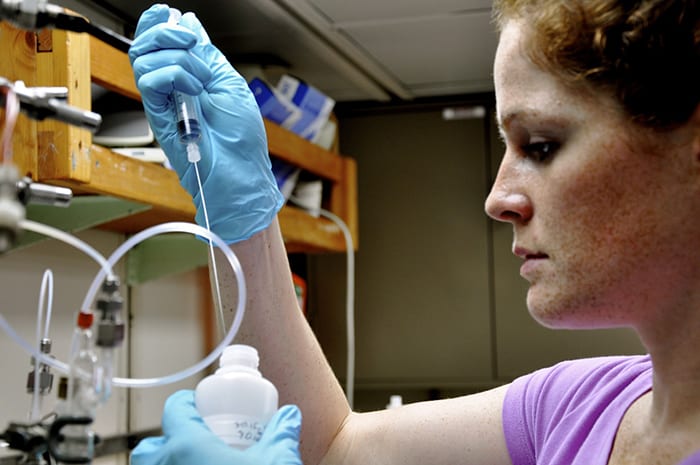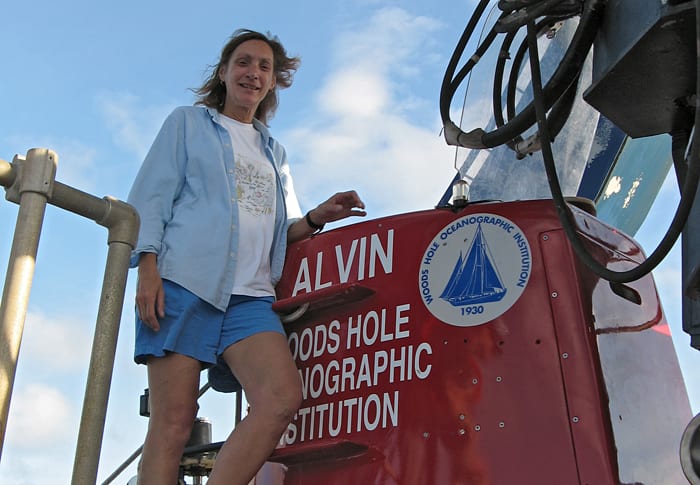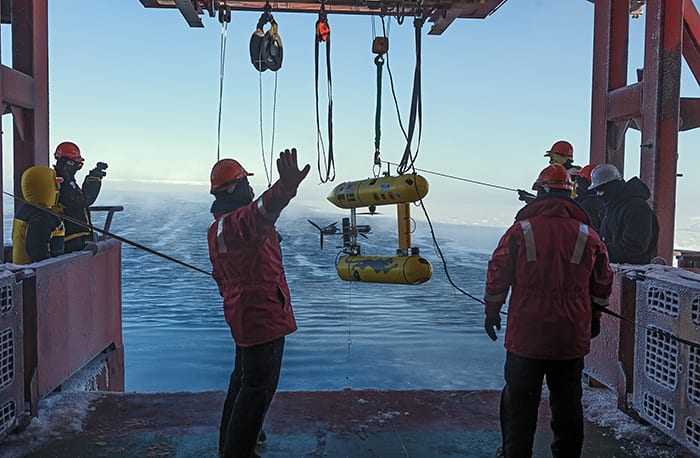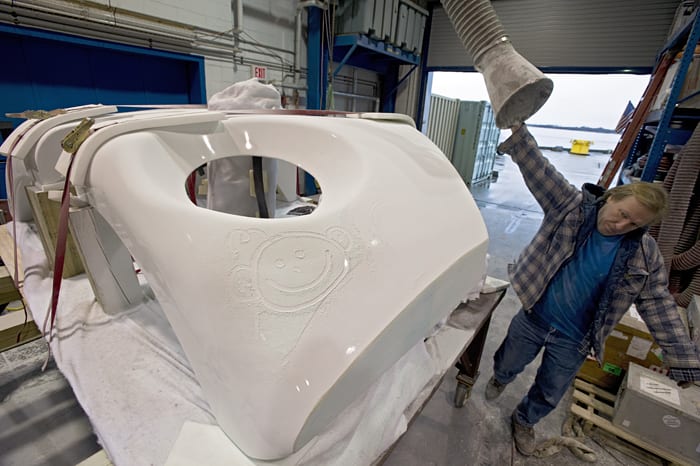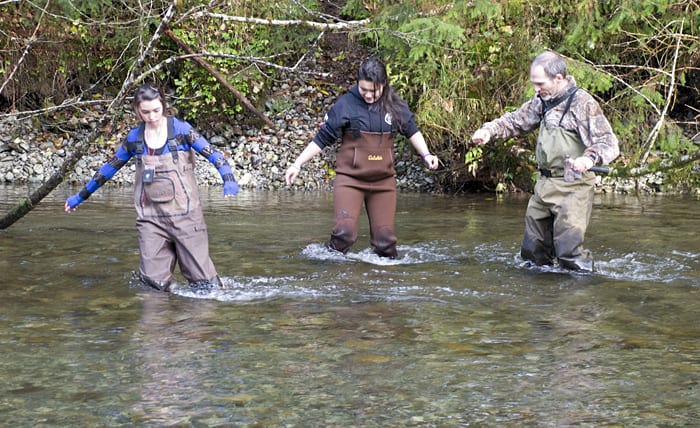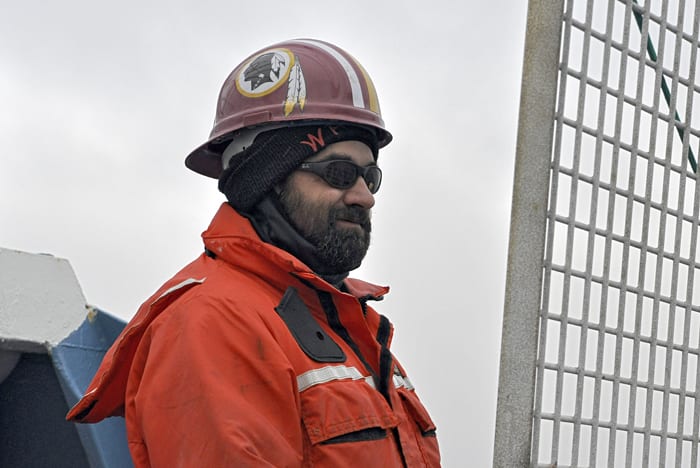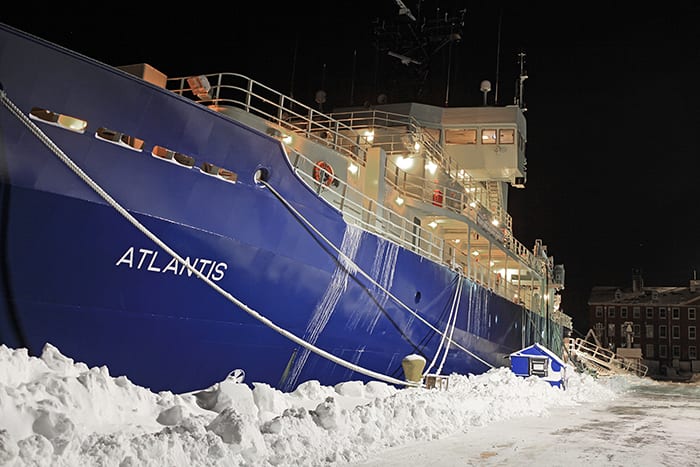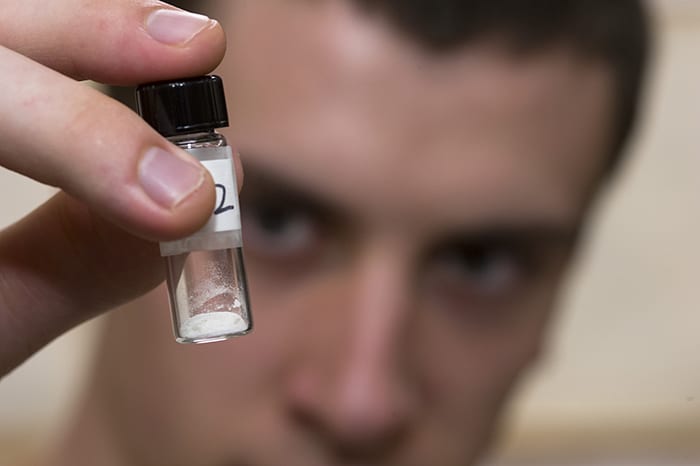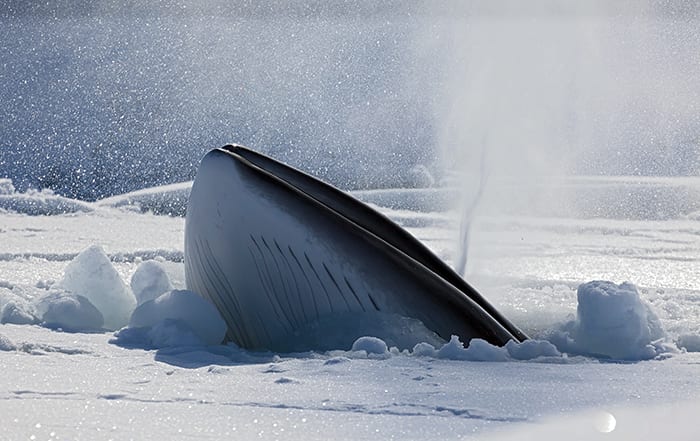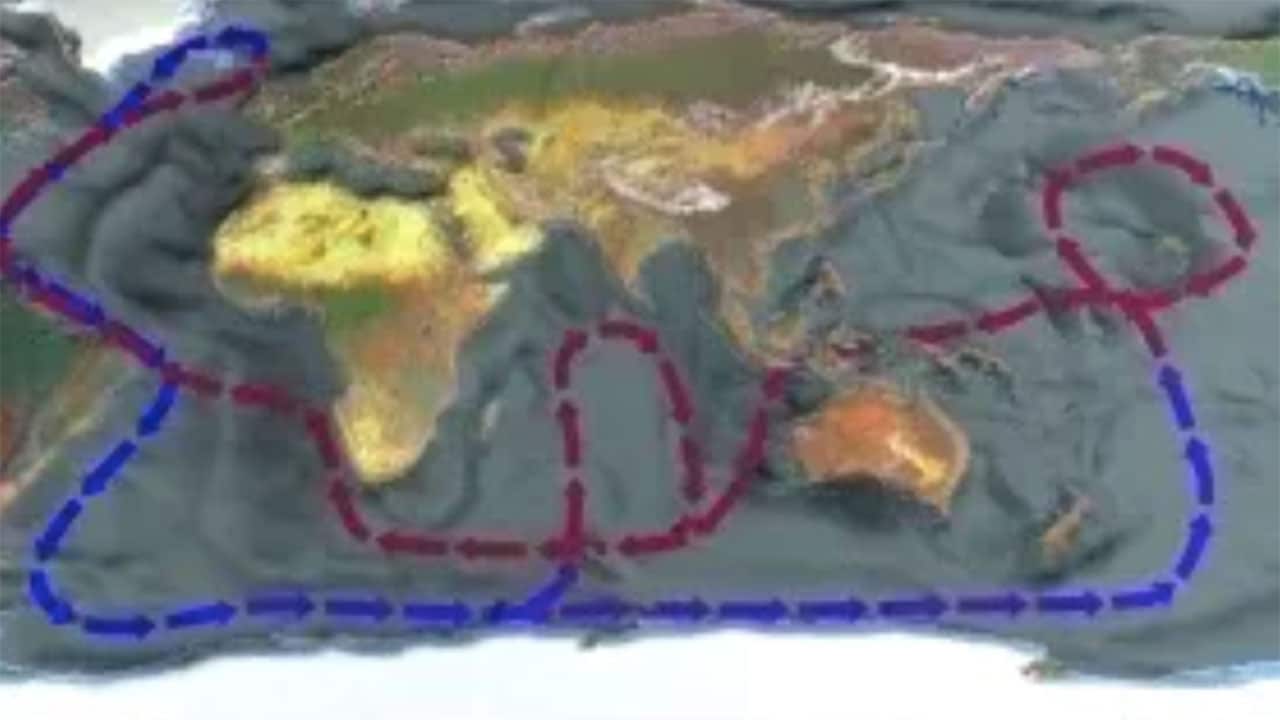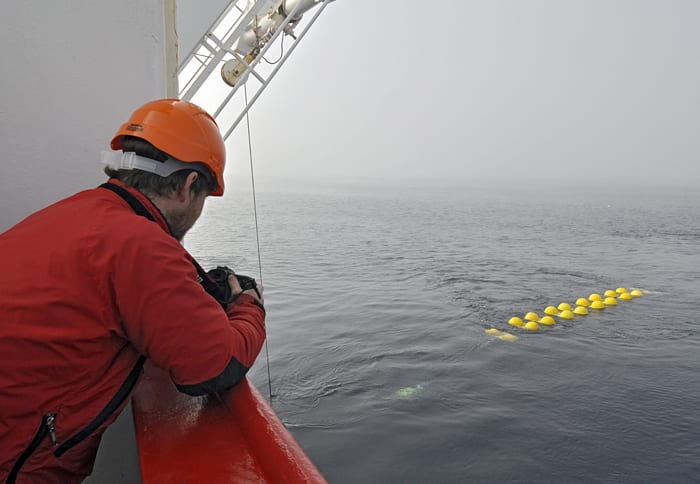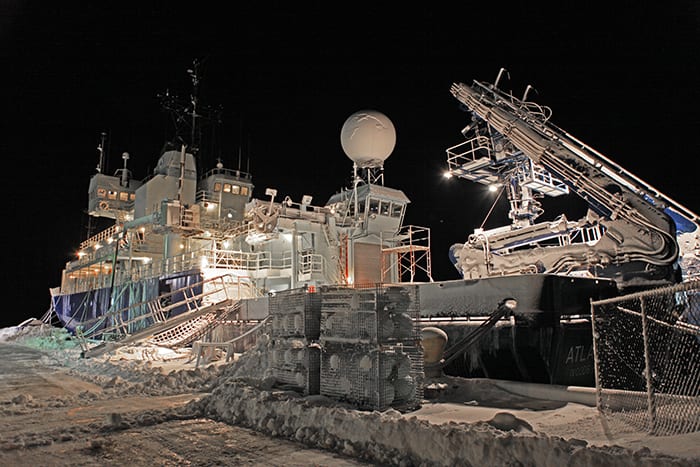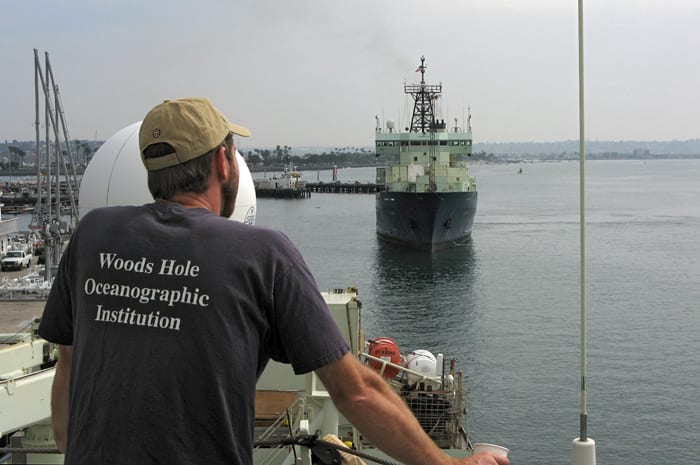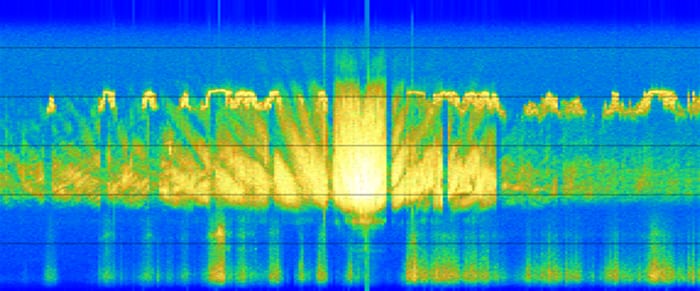Multimedia Items
Coral Archives
Researchers Paul Henderson (left) and Luis Vasquez-Bedoya collect coral samples from a large reef in the waters off Mexico’s Yucatan Peninsula. Corals build their skeletons over time from calcium carbonate and…
Read MoreRecovered Treasure
MIT-WHOI Joint Program student Alec Bogdanoff (top), student intern Anna Hadartz (center), third mate Mike Chretian (right) and WHOI engineer Ken Decoteau (bottom) return to R/V Knorr after recovering a yellow Slocum…
Read MoreDeep Waters, Not Still
WHOI technicians John Kemp (blue hat) and Jim Ryder (red hat) work with two Coast Guard crewmen from the ice breaker Healy to deploy a “long-ranger” acoustic doppler current profiler…
Read MoreThe True Bosun
What happens on the deck and over the side of a research vessel happens under the watchful eyes of the bosun. Ever since R/V Atlantis sailed on its maiden voyage…
Read MoreWomen’s History Month at WHOI
Students Unlike Kathy Burns‘ class of 1975, the 2010 graduates of the MIT-WHOI Joint program reflect current trends in the demographics of graduate students at the Institution, with women accounting…
Read MoreWomen’s History Month at WHOI
Students After the MIT-WHOI Joint Program was formed in 1968, it took 2 years for the first female students to arrive. Kathy Burns came to Woods Hole in 1970 and…
Read MoreProfiles in Currents
Kjetil Vaage (blue hat), from the University of Bergen, Norway and a former student in the MIT-WHOI Joint Program, helps prepare a moored profiler for deployment north of Fram Strait…
Read MoreNoble Undertaking
MIT-WHOI Joint Program student Cara Manning collects a water sample for noble gas analysis aboard the R/V Tioga in December 2012. Cara and her advisor, Rachel Stanley, installed a portable noble…
Read MoreA Strong Stomach
WHOI biologist Alfred Redfield (left) aboard WHOI’s first research ship Atlantis, was fond of telling this story about the second day of his first Atlantis cruise: “[T]here was a pretty…
Read MoreThe River Styx?
WHOI researchers Paul Henderson (left) and Matt Charette prepare to enter a cenote, or natural sinkhole, near Puerto Morelos, Mexico. The limestone bedrock in this region is very porous, with…
Read MoreWomen’s History Month at WHOI
Mentors & Mentees MIT-WHOI Joint Program graduate student Jill McDermott learned about hydrothermal vent chemistry from one of the masters—she was one of Karen Von Damm’s last students. McDermott recalled…
Read MoreWomen’s History Month at WHOI
Mentors & Mentees Former University of New Hampshire professor Karen Von Damm (shown here after an Alvin dive) graduated from the MIT-WHOI Joint Program in 1984, a time when few…
Read MoreWhich Way is Up?
Most oceanographic survey instruments look down at the seafloor. On a recent trip to the Southern Ocean, though, members of Hanu Singh’s lab equipped one of their SeaBED vehicles to…
Read MoreEat My Dust
Vic Miller pulls an exhaust duct into place to vacuum up the resin dust left after he and fellow mechanic Joe Harvey sanded a large piece of syntactic foam. The…
Read MoreStudying Distant Rivers Locally
People living near rivers can become “citizen scientists” to aid research focusing on Earth’s river systems in a time of changing climate. Leaders of the Global Rivers Observatory Project—WHOI chemist…
Read MoreA Turn at the Winch
WHOI research specialist Daniel Torres, dressed for cold even in August, watches wire pay out from a winch to deploy a mooring in the ocean off Norway. Torres was aboard…
Read MoreAfter the Storm
Notice the cleanly plowed pier next to WHOI’s research vessel Atlantis after the February blizzard that crippled much of New England. “The Facilities & Services team at WHOI are often…
Read MoreCrystal Clear
MIT-WHOI Joint Program student Tom DeCarlo holds a vial containing aragonite, a crystal form of calcium carbonate, the mineral that reef-building corals use to build their skeletons. To make aragonite,…
Read MoreA Whale Rises
On a 2012 research cruise in Antarctica, WHOI postdoctoral scientist Peter Kimball helped use the robotic vehicle Jaguar to map the underside of the ice. But the trip was memorable…
Read MoreGreat Ocean Conveyor
A schematic of the ocean circulation system, often called the Great Ocean Conveyor, that transports heat throughout the world oceans. Red arrows indicate warm surface currents. Blue arrows indicate deep…
Read MoreNow You See Them…
WHOI post-doctoral scholar Ben Harden waits to capture a dramatic moment at sea: A mooring anchor, released off the stern of the British research ship James Clark Ross, sinks to…
Read MoreEnduring Nemo
When the Blizzard Nemo blew through New England on February 9, 2013, much of Cape Cod, including the town of Falmouth and parts of Woods Hole Oceanographic Institution, lost power…
Read MoreFancy Seeing You Here
On any given day, WHOI’s research vessels are more likely to be in different oceans than in the same port. But this was one of those rare days. On June…
Read MoreSeismic Whale Detector
This “sunburst” pattern shows the calls of one or more fin whales, recorded over a 5-hour period by an underwater microphone that had been deployed to detect landslides, volcanoes, and…
Read More
